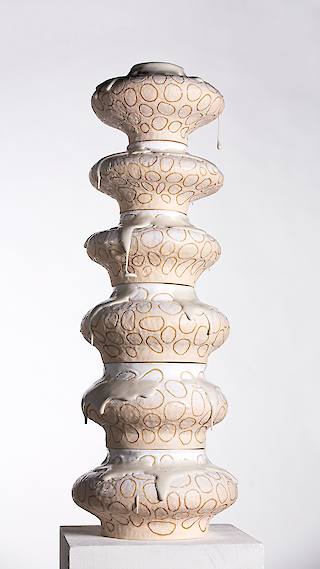Imperceptible elements surround us. From diseases and viruses to natural elements such as air, we cannot see such phenomena directly. As a result, we are taught that our ecosystem consists of imperceptible threats. An invisible threat such as air pollution is an example of this imperceptible danger. We can process such information logically, but it is still hard to perceive it in a more intuitive, sensory, and emotional manner. This project aims to translate ambient data into an emotional experience for individuals and communities, hoping to trigger societal awareness. «Pagoda. tmos» consists of three interactive sculptures with natural interfaces. Interfaces that prompt modalities rather than representing information numerically. Each sculpture collects real-time ambient data and represents them through bio-reactive material transformation, kinetic motion and sound production. These ambient pagodas aim for viewers to have a moment of contemplation, reflection, unification, and enlightenment for a resounding experience.
«The ‹Pagoda.tmos› project showcases a unique design way of combining ceramics with electronic and digital technologies. The beautifully crafted ceramic objects have undergone many iterations and testing of the embedded technology to provide a seamless perceptual experience (see MA Thesis). The project gives materiality to invisible information floating around us, going beyond existing data visualizations on the screen. Perceiving the real-time environmental data in a public context allows for personal experience and collective discussion of invisible changes in the air as they happen. The sculptures become site-specific through their interaction with their surroundings.» – Excerpt from the supporting statement of the Subject Area Interaction Design

«‹Pagoda.tmos› transforms the state of materiality and bio interfaces for public perception of climate change.» – Jooin Shin
«In future, I see myself deepening and exploring the field of materiality and interaction to expand further into interactive ceramics.» – Jooin Shin

